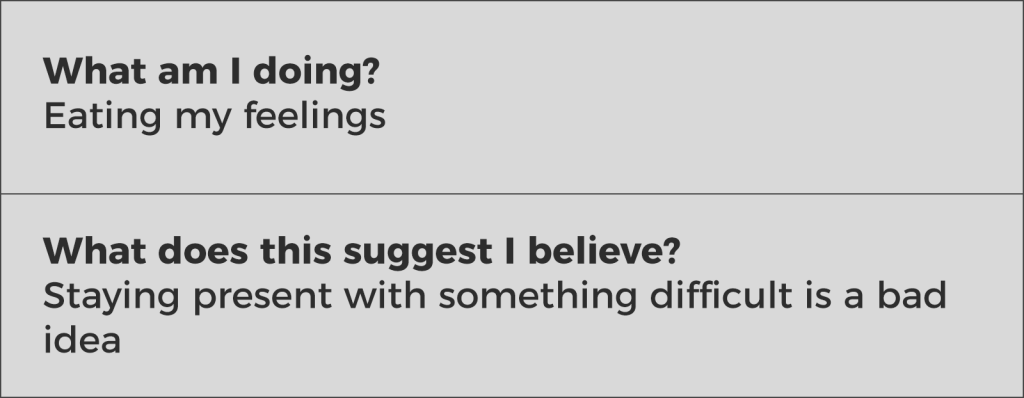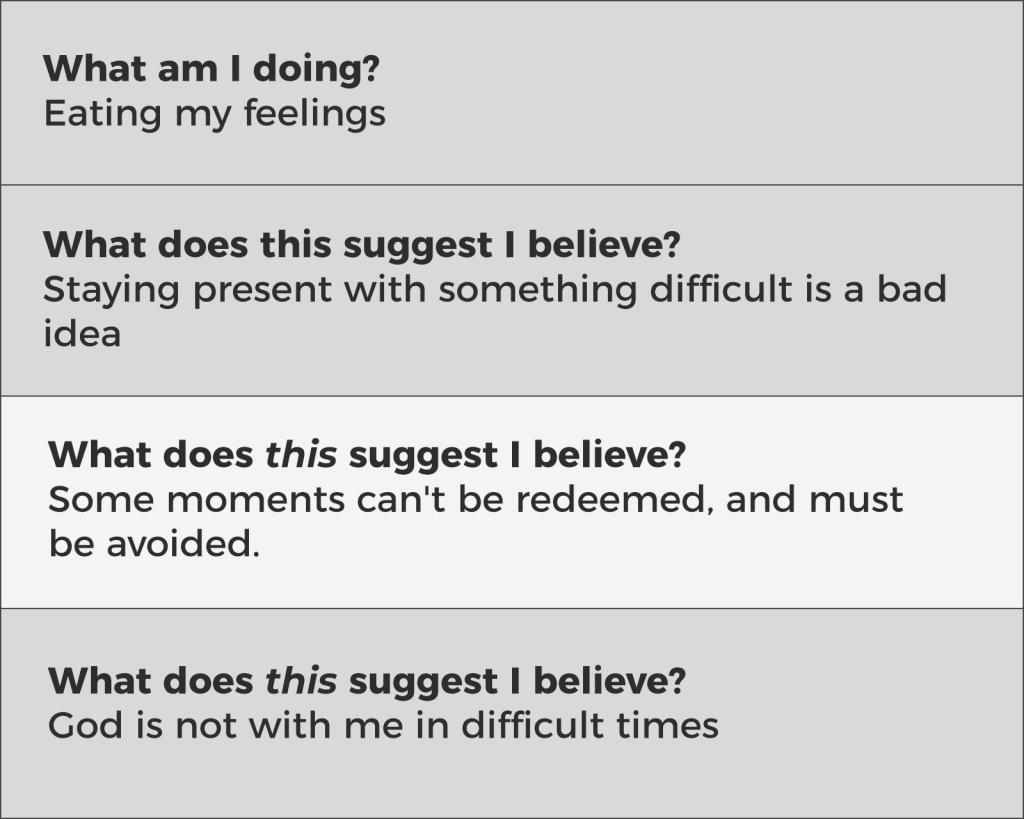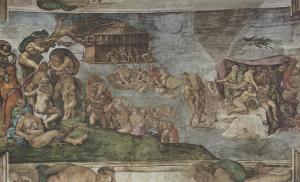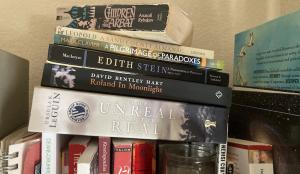
If you were to look through my journals over the last few years, you would see a pretty good little collection of diagrams, complete with quadrants and arrows. These are a part of my practice of spiritual growth and self-awareness. It’s a process my colleague Steven Tomlinson recommends for crafting a rule of life. A rule of life is a term from the monastic tradition for a practice of intentionality for a life of faith. Steven teaches a process he calls the “Bento Box,” referring to the divided plates that Japanese lunches often come in.
The idea is this: behaviors manifest beliefs, and beliefs undergird behaviors. So if I notice something that I’m doing that I’d rather not do, the first step is not, actually, to do something else. At least, if I want to integrate this observation with my faith, that’s not the first step. Instead, I need to take a moment for some excavation. Often I can do this on my own. Sometimes I need my wife’s help, or a friend’s help, or my priest’s or therapist’s help to get down through the crusty surface.
Contemplations in a Bento Box
So, for instance, I tend to eat mindlessly when I get anxious at home. I notice this, and wish I would stop. I don’t like what this does to my body or to my ability to be present with my family. I also don’t like the way it makes me negligent of my role in the ecological impact of food consumption.
I’d like to stop. But first: this habit has some information for me, and I don’t want to miss it.

If I stay with this manifested belief for a moment, it’s bound to lead me to something theologically rich. Let’s expand the inquiry:

Uh-oh. Look at what my habit has shown me. It turns out that I believe something I don’t want to believe. My body is teaching me what I believe, despite that fact that my mind would never, on its own, express this belief.
So what to do? Well, for me, the next step is generally to articulate to myself what is is that I wish I believed.

We’re almost done with our Bento Box now. See it? I can now connect the aspirational belief (what I would like to believe) with an aspirational behavior (what I would like to do).

Small Experiments
OK, but we’re not quite through. My recent post referred to the importance of tiny steps, ones that are within reach and that we can celebrate as we form them into habits. Just as I can’t change my beliefs by willing myself to change them, I can’t change my behavior by a heroic strength of will.
I need to let go of the big aspirational behavior, and reach for something small. A small experiment in doing something different. Maybe I put a little notecard on the pantry door that reminds me to stay in the moment. Maybe I give myself a little tap on the chest when I notice my hand reaching for the peanuts, so that I can reconnect with my body. Maybe in those moments I say a little prayer or recitation, like “Humans do not live by bread alone.” Or peanuts either, I suppose.
Whatever it is I try, I do it as step one toward a bodily manifestation of something I want to believe.
The Bento Box and the Diagonal Way
This is a practice my colleagues and I, with Steven’s guidance, talk through with students at our seminary. Having faith isn’t just a matter of the head, or even of the head and heart. Often it’s our bodies that reveal the deep secrets of our faith. It takes courage to sound these depths. Some of the great spiritual guides— Teresa of Avila maybe more than anyone—spent their lives noting the ways we can deceive ourselves by avoiding these well-guarded secret beliefs. They practiced and passed along real embodied wisdom for avoiding self-deception, for laying ourselves bare before God’s discerning spirit. The Bento Box Rule of Life is, for me, a tool within that tradition.
It’s become a part of my own practice in the diagonal way of holiness. Small steps into my embodied humanity that are also small ascents, I hope and believe, into the holiness of God.











